Sacred Summits: Greece’s Ancient Mountain Sanctuaries
From Crete to Olympus, hike the...
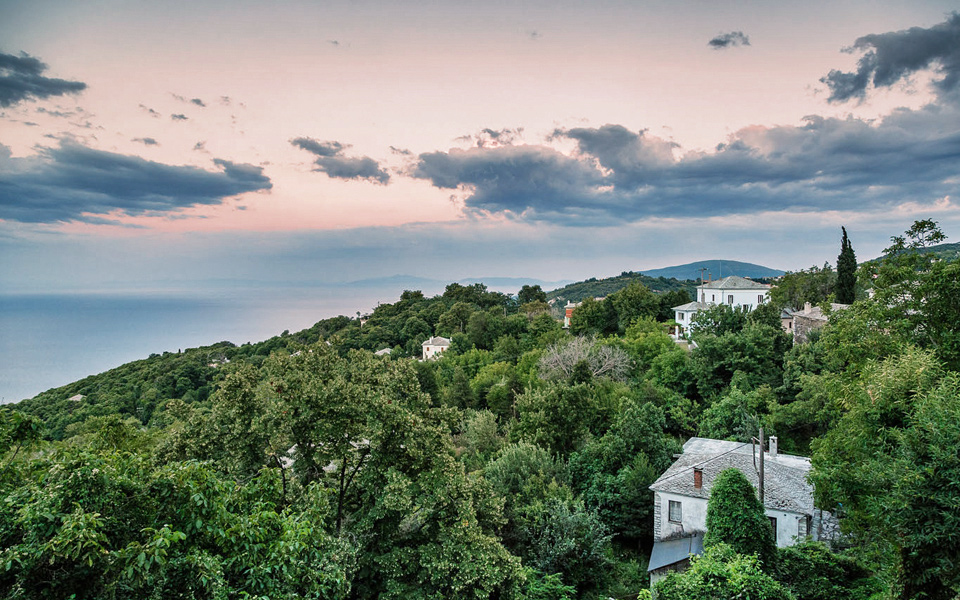
Tsagarada, an emerald paradise of little villages and cozy neighborhoods at the foothills of Tsagarada of Pilio
© Yadid Levy
I pick up the classic edition of Alice in Wonderland, take a step back, run and land on the page with the bewitched forest. Or so it seems. With that childlike sense of invincibility that makes you believe you can actually jump into the pages of a fairytale, I round the last few bends in the road and arrive at the heart of Tsagarada. As I park and unfold the map at the side of the road, under the thick forest of beech, plane and horse chestnut trees, I can hear the creeks carrying the water from the tall peaks. There is no point in wasting any more time on the paved road: Tsagarada is a multifaceted, sparsely populated village with distinct neighborhoods and the most charming houses, well-maintained cobblestone trails, with mushrooms and wildflowers alongside orchards with crunchy red apples, delicious pears and a wealth of garden vegetables – all a good distance from where my car can reach.
Under the gigantic plane tree (the circumference of the trunk is 14 meters) and with the Church of Aghia Paraskevi, built in 1719, in the background, I have my first cup of coffee for the day as I gather strength for a hike. Following the lane next to the historic Lost Unicorn Hotel, I find myself gazing at the Nanopouleios School, designated by UNESCO as a work of art. A representative example of neoclassical architecture built in the early 20th century, it now houses the elementary school. An equally impressive Pilio-style stone building is the Achillopouleios School. Originally a secondary school for students who didn’t aim to attend university, and later a commercial school, it is now open to the public. The digital folk art museum it houses features miniature copies of traditional tools used in the region, and a photo exhibit (Tel. (+30) 24260.492.38).
“Tsagarada is a multifaceted, sparsely populated village with distinct neighborhoods and the most charming houses.”
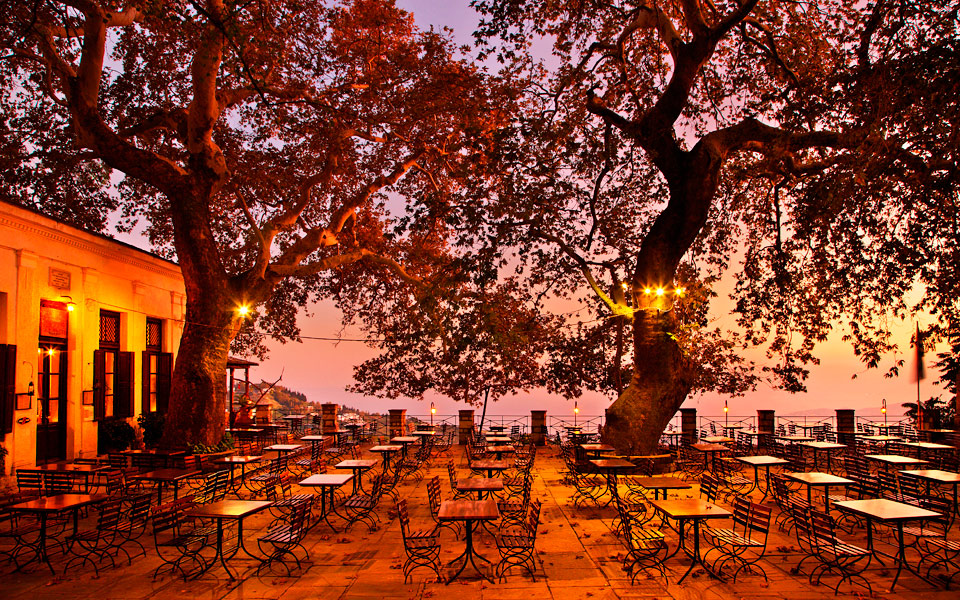
Each village has its own shady square, perfect for a cooling-off pit stop
© Shutterstock
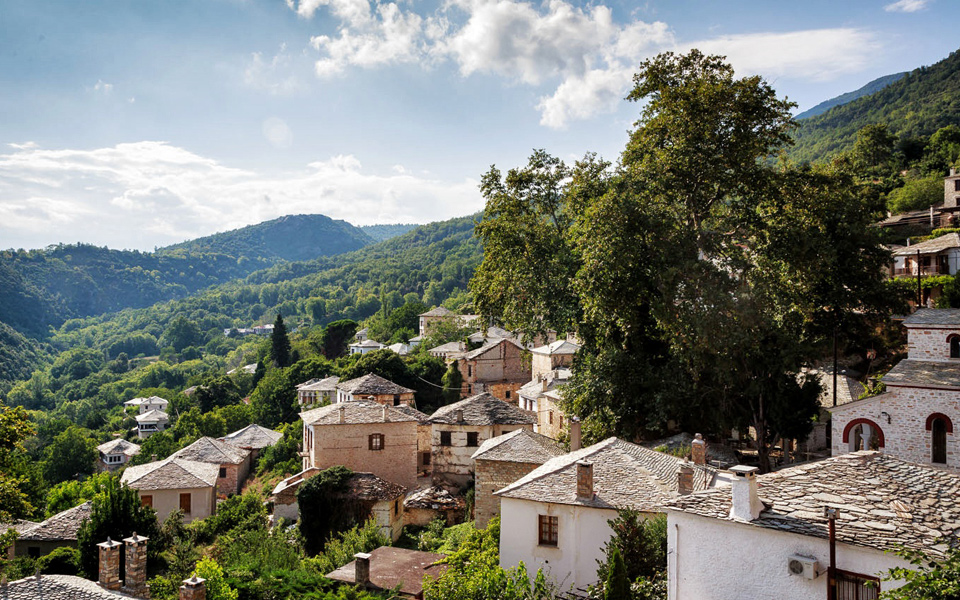
View from elegant Pinakates, an essential stop for food and exploration along the road towards Tsagarada
© Yadid Levy
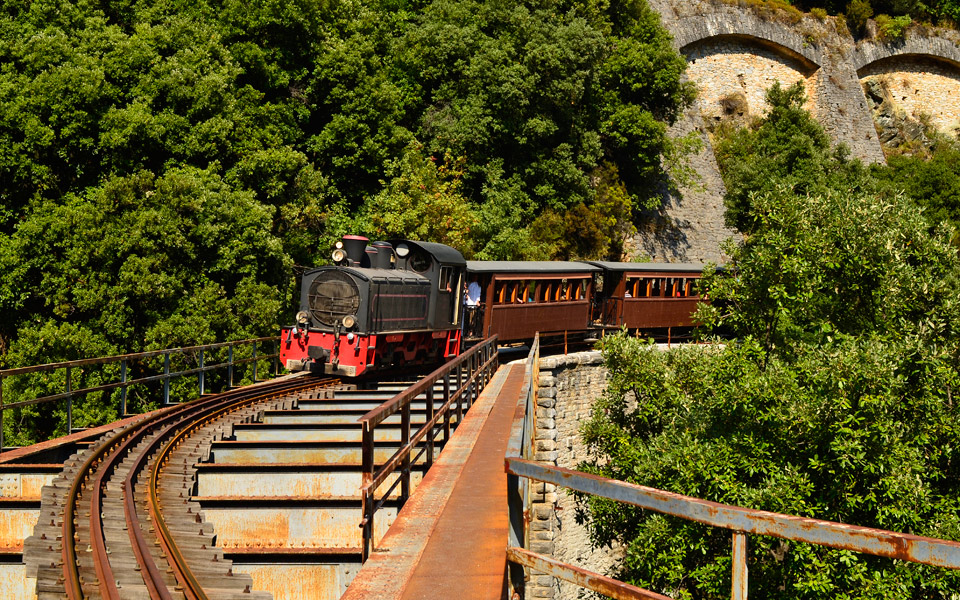
The legendary Moutzouris narrow-gauge train
© Shutterstock
It is difficult to choose which nearby village to visit for a day trip.
Portaria features the trail of the Centaurs, and Makrinitsa offers the spectacular architecture of its houses, built on a terraced slope with a 350m difference in elevation from top to bottom. Pinakates is the place for breathtaking views and impressive period mansions, while in Milies you can watch for the arrival of the legendary Moutzouris narrow-gauge train. In Zagora, you’ll find the largest apple-producing area in Greece, and in Kissos, the church of Aghia Marina is the biggest draw. But no matter where you go, you’ll come across a stone-paved square where you can relax under a leafy plane tree.
I continue uphill through the other neighborhoods of Tsagarada – Aghios Stefanos and Aghia Kyriaki – and finally arrive at Taxiarches. According to tradition, local merchants who had emigrated to Egypt returned and built their mansions on large estates which evolved into these modern-day neighborhoods. Most of the mansions now stand in ruins, choked by ivy and gradually becoming lost in the lush green embrace of the Mt Pilio landscape. Beyond, life continues at its regular pace in houses which are a little more conventional and modern, with tidy courtyards and well-tended flower pots of hydrangeas and camellias. Water flows everywhere, quenching the thirst of the earth and visitors.
Every local square is a good stopping point, but it is worth staying a bit longer at Taxiarches, which marks the end of the route. The Church of the Archangels became famous when it was discovered that its excellent acoustics were due to the 48 upturned earthen jars on the roof and five communicating underground wells. The wall paintings are another reason to visit this lovely church.
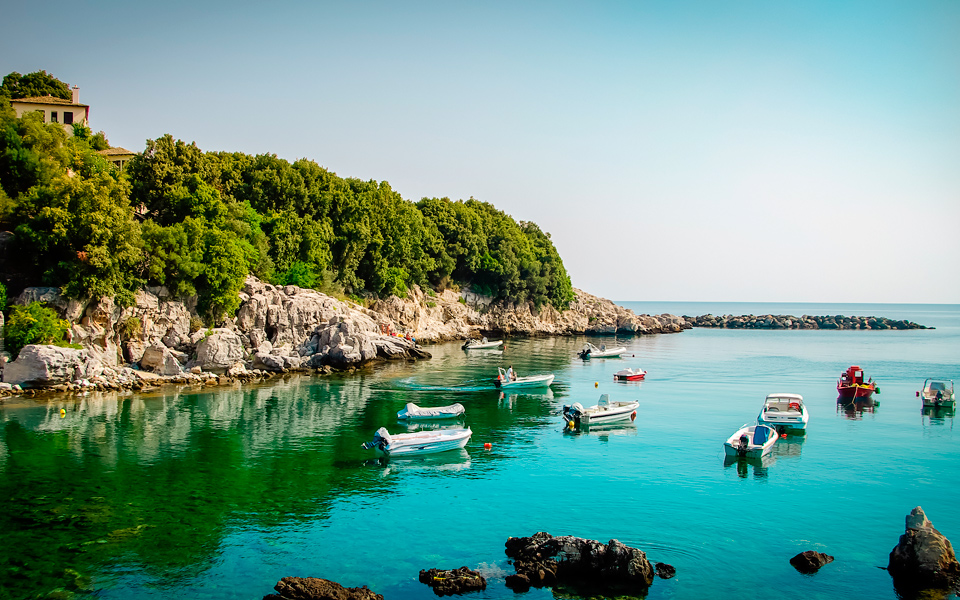
The small port at Damouhari
© Shutterstock
But Pilio’s magic is more than just its densely wooded mountain slopes; from the heart of the forest, you can reach the beach for a swim in no time at all. The elaborate path to the seaside at Damouhari begins at Aghia Paraskevi Square. I set off downhill between the houses; I pass through the stone-paved lanes, cross over the main road, and walk past the familiar chapel of Aghios Efstathios. Just behind the bell tower of the Aghia Kyriaki Church, I disappear into the shady gorge and continue to the kiosk at Agnanti. Time for a rest.
From here on, I have the sea breeze and infinite view of the Aegean to keep me company. A steep downhill with an incredible view of the sea leads to the most intricate stone-paved path at a spot called Kagiolia, and a few minutes later, I am swimming in the cool waters of charming Damouhari. So many years later, and the memories of the filming of Mamma Mia! still linger. It’s not easy to forget that the relatively obscure village of Damouhari won out over so many islands and beaches competing to be the setting of the film.
“Pilio’s magic is more than just its densely wooded mountain slopes; from the heart of the forest, you can reach the beach for a swim in no time at all.”
FOOD
Visit Deipnosofistis (Tel. +30 24260.498.25), one of the best-known mountain restaurants in Greece, for carefully prepared dishes, a fine wine list and select music. Also try Agnanti (Tel. +30 24260.49.210) for traditional cuisine with modern touches, and Aleka’s (Tel. +30 24260.493.80) for classic local delicacies.
ENTERTAINMENT
In Tsagarada, try Aleka’s (Tel. +30 24260.493.80) for syrupy sweets; in Zagora, the small Ylien (Tel. +30 24260.235.77) with sweet and savory treats; in Milies, the Anna na Ena Milo Café (Tel. +30 24230.868.89) for ethnic music and delicious sweets; and at Kissos Square, the Scholarheio for tsipouro and other beverages.
GETTING THERE
You can get to Tsagarada from Volos in one of two ways: either along the coastal road through Milies or Neohori, or via Hania. The roads along both routes are well maintained, but with lots of turns. The upside is that the twisting road serves as a natural shield, protecting this tiny green paradise from mass tourism.
From Crete to Olympus, hike the...
Whether by foot, car, or the...
Experience Pilio’s scenic hikes, aromatic herbs,...
City or mountain? Urban strolls or...